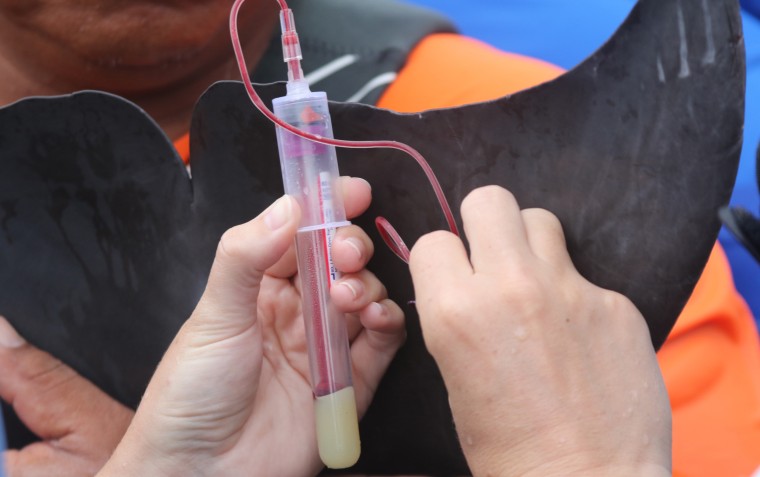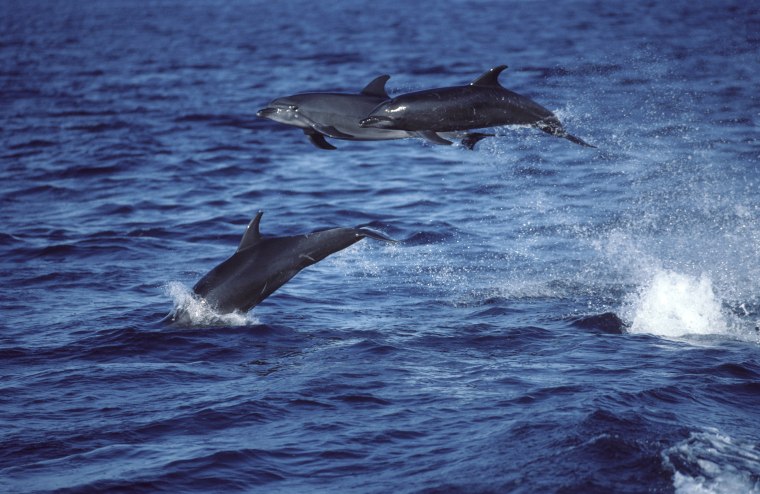Bottlenose dolphins living near the Deepwater Horizon oil spill in the Gulf of Mexico show striking signs of genetic changes associated with a wide variety of bodily functions, according to a study published Wednesday.
The discovery highlights how scientists are discovering the enduring consequences linked to the unprecedented April 2010 disaster, which released an estimated 210 million gallons of crude oil off the Louisiana coast and killed 11 people. It is also estimated to have killed more than 80,000 birds and almost 26,000 marine mammals.
The study focused on dolphins in the heavily polluted Barataria Bay near New Orleans, and used blood tests to compare these dolphins to those living in the less contaminated waters of Sarasota Bay, Florida.
The researchers subsequently discovered gene expression changes in the Barataria Bay dolphin population, including genes involved in immunity, inflammation, reproductive failure, lung issues and cardiac dysfunction. The results were published in the journal PLoS ONE.
These changes align with previously documented health effects, said co-author Sylvain De Guise, a professor in the pathobiology department at the University of Connecticut. He also co-authored another study that found the Barataria Bay dolphin population has declined by 45 percent since the disaster. In an assessment of dolphins that lived through the oil spill, De Guise and his colleagues found nearly 80 percent still experience some form of ill health, with lung disease the most common issue.

This new study leveraged data collected from dolphin health evaluations conducted between 2013 and 2018. The team analyzed blood drawn from 60 dolphins from Barataria Bay and 16 from Sarasota Bay and looked for molecular differences through a process called gene expression profiling. This method is a novel way of understanding an organism’s health because it has the potential to enable early detection of illness and is easier to perform than traditional catch-and-release veterinary assessments.
The dual purpose of this study was to test and refine this method while attempting to understand the underlying causes of the health consequences suffered by Barataria Bay dolphins. In the future, the study team is hopeful this method can help pinpoint which marine mammals are at risk of disease.
“We can say dolphin populations are experiencing effects, but we don’t really know what underlies the disease and dysfunction we’re seeing,” said first author Jeanine Morey, a research biologist who worked with the National Marine Mammal Foundation at the time of the study. “Through this molecular work, we’re starting to understand the root of the problem.”
Various triggers can cause changes in gene expression, she said. Gene expression changes, in turn, prompt the body’s response. Because factors like water temperature can also cause a change in gene expression, comparing the Barataria Bay dolphins to the Sarasota Bay dolphins helped the team pinpoint exposure to oil contamination as a defining difference between the two groups.
Further, because of the earlier studies evaluating the health of Barataria Bay dolphins since the spill, the team could identify which dolphins in their cohort were exposed to oil and which were born after the event. They found that the significant differences they observed primarily stemmed from the dolphins that lived through the disaster.
However, younger dolphins aren’t necessarily in the clear. Some of the most pronounced differences observed in the Barataria Bay group link to genes related to the immune system. An earlier study found these dolphins experienced issues with their immune system as recently as in 2018, and subsequent laboratory tests on dolphin cells and mice suggested these immune differences could be passed down to future generations. Changes to the immune system increase the susceptibility to infectious diseases, which can also affect the dolphin’s reproductive success.
“The Barataria Bay bottlenose dolphin population is not doing very well,” De Guise said. “If recovery is underway, it would be at its very beginning and would be contingent on no additional stressors.”
A stoppage of stressors is unlikely. A study released in August found traces of the Deepwater Horizon spill are still detectable, and new drilling and flood protection plans are expected to result in the deaths of Barataria Bay dolphins if they move forward as planned. Even smaller human-made problems continue to interrupt dolphin life.
“When we went out on these health assessments, we would find dolphins entangled in fishing lines and nets,” Morey said. “It is very tough to see these animals suffering.”
